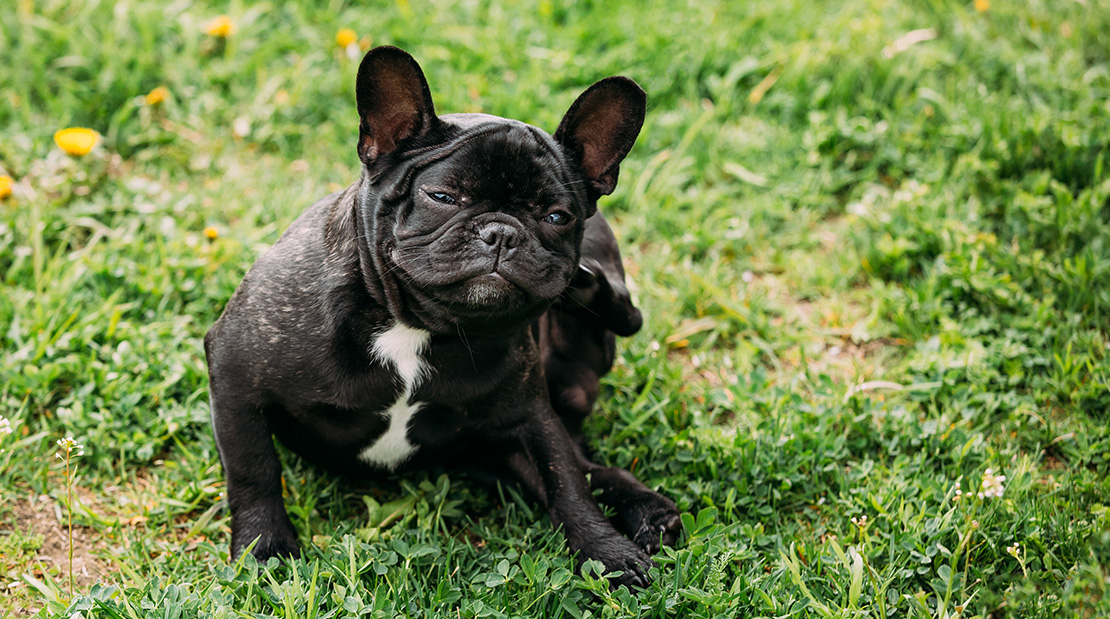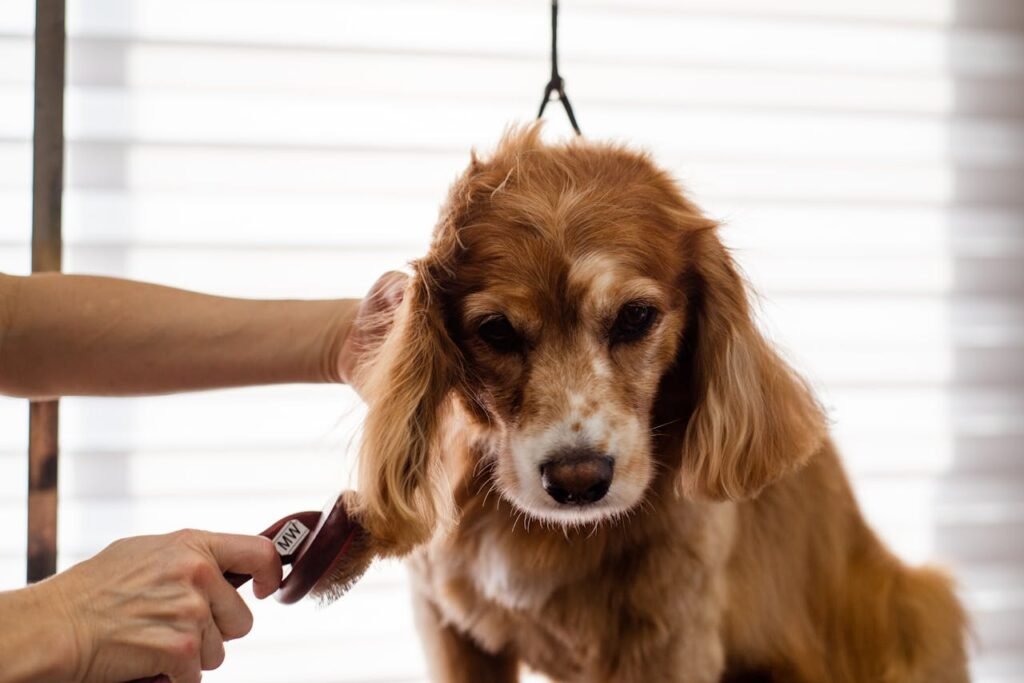5 Signs Your Dog May Have Skin Issues. Is your dog scratching a lot? Learn The 5 signs that could mean your pup has skin issues. Spot The problems early & keep your furry friend healthy & happy!
5 Signs Your Dog May Have Skin Issues
Sign 1: Excessive Scratching
One prominent sign suggesting a dog experiences skin issues relates to scratching. Dogs often scratch themselves for several reasons. Such as allergies. Parasites. Or skin infections. If your dog displays persistent scratching or seems unable to settle. This behavior might indicate discomfort or irritation. Observing your dog’s scratching habits can reveal crucial information about its overall health.
When I first noticed my dog engaging in nonstop scratching. A wave of concern washed over me. It seemed like every moment focused around finding relief. After several visits to vets and trials with various treatments. I realized following those early signs helped prevent more severe issues down the line.
Moreover. Frequent scratching can lead to further complications. Such as skin damage or infections. Therefore. Monitoring for changes in your dog’s scratching patterns becomes essential. Seeking prompt assistance often saves your furry friend from unnecessary distress.
Sign 2: Redness or Inflammation
Redness or inflammation on your dog’s skin often signals underlying issues. Healthy skin appears smooth and free from irritation. However. Red patches indicate irritation or infection. Noticing subtle changes should prompt you to investigate further. Consistent redness often accompanies other symptoms. Amplifying underlying skin problems.
In my experience. Any visible changes in my dog’s skin warranted immediate attention. Observing those subtle signs early allowed me to address potential problems promptly. This vigilance ensured my dog remained comfortable without unnecessary suffering.
Additionally. Inflammation can often accompany other signs like scratching or excessive licking. Keeping a close eye on your dog’s behavior aids in identifying trouble spots. Proper management often involves consulting with a veterinarian for appropriate diagnostic procedures and solutions.
Sign 3: Hair Loss
Hair loss. Or alopecia. Represents another clear sign that your dog may experience skin issues. Loss can occur in patches or across broader areas. While some hair loss can be seasonal. Persistent or sudden bald spots warrant concern. Various factors contribute. Including allergies. Endocrine disorders. Or parasitic infections.
Monitoring your dog’s grooming habits plays a vital role in catching hair loss early. Regularly brushing your dog enables you to spot bald patches or thinning fur. Consequently. This level of attention helps in determining underlying causes and addressing them effectively. It also strengthens your bond with your dog through shared moments.
Seeking help from a veterinarian remains essential for identifying the specific cause behind your dog’s hair loss. Many conditions can lead to bald spots. But proper diagnosis ensures effective treatment. Thus. Early intervention often leads to better outcomes in managing these conditions.
Sign 4: Unpleasant Odor
An unpleasant odor originating from your dog’s skin often indicates potential skin problems. Healthy dogs have minimal smell. While changes in scent suggest underlying infections or accumulation of dirt and oil. When skin conditions arise. Bacteria or yeast might multiply. Leading to foul odors often interpreted as discomfort.
Upon a recent trip to the park. I noticed my dog emitted an unusual odor. This prompted immediate action. Leading to a visit with my vet. Following a thorough examination. We identified a mild skin infection requiring treatment. This experience reinforced how vital early detection truly is.
If your dog smells different. Don’t hesitate seeking professional help. Early diagnosis allows your vet to recommend appropriate treatments. Significantly reducing discomfort for your beloved pet. It’s crucial not only for your dog’s comfort but also for fostering a healthy living environment.
Sign 5: Dry. Flaky Skin
Dry. Flaky skin serves as another indicator that your dog may have underlying issues. Causes range from environmental factors. Nutritional deficiencies. Or allergies and skin infections. When observing this sign. Consider your dog’s diet and environmental conditions. Evaluating moisture levels in their living space becomes essential.
For instance. When our region experienced unusually dry weather. My dog’s skin began showing signs of dryness and flakiness. Recognizing this correlation prompted me to reexamine her diet and hydration levels. Making necessary changes not only improved her skin condition but also revitalized her energy.
Incorporating fatty acids into your dog’s diet promotes healthier skin and fur. Therefore. Paying attention to your dog’s nutrition can significantly impact its overall skin health. Regular vet checkups help in assessing needs related to skin condition and adjusting the diet accordingly.
- 👀 Excessive scratching
- 🔴 Redness or inflammation
- 🐕 Hair loss
- 😷 Unpleasant odor
- 💧 Dry. Flaky skin
Sign 6: Bumps or Lesions
Bumps or lesions may surface on your dog’s skin and signify various issues. These irregularities could stem from allergic reactions. Insect bites. Or even tumors. Distinguishing between benign and potentially harmful lesions requires careful observation. Ideally. Veterinary assessment assists in determining necessary steps for treatment.
The first time I discovered bumps on my dog’s skin. I felt compelled to act promptly. Not wanting any complications. I booked a visit with our vet for a thorough examination. Thankfully. Results showed minor allergies rather than anything severe. This incident encouraged me to be more vigilant about my dog’s skin condition.
Regularly checking your dog’s skin. Including areas often missed. Like around ears or paws. Helps identify any unusual bumps early on. The sooner you address these signs. The better chance you provide for successful treatment. Preserving your dog’s health.
Sign 7: Licking or Biting
Licking or biting specific areas on your dog’s body often signals irritations present. Dogs engage in this behavior as a method of coping with discomfort or seeking relief from itching. Prolonged licking or biting can lead to further skin damage. Leading to possible infections. Noting when or where your dog licks or bites provides essential clues.
In my experience. When my dog licked her paws obsessively. I knew something required attention. This repetitive action suggested discomfort rather than a simple habit. Prompting a vet visit led us down a path of understanding the underlying allergies involved.
Monitoring your dog’s behavior remains critical for maintaining its overall wellbeing. By recognizing excessive licking or biting. You can tackle any present issues effectively. Leading your dog back toward comfort and happiness. Prompt intervention helps ensure a quick recovery process.
Common Skin Conditions
Many skin conditions may affect dogs. Producing similar signs. Assessing these conditions aids in distinguishing common ailments and ensuring proper treatment. Some prevalent skin conditions include allergies. Infections. And parasites.
Allergies often present themselves in forms like food allergies or environmental sensitivities. Knowing your dog’s triggers can assist in managing these symptoms. Infections may stem from bacteria or fungi. Often requiring medical intervention for proper treatment and care.
Fleas. Ticks. And mites represent common parasites invading dog skin. Each type of parasite could lead to various symptoms. Awareness remains essential for recognizing issues early. Allowing for effective prevention and treatment measures.
| Symptoms | Possible Causes | Treatment Options |
|---|---|---|
| 👀 Excessive Scratching | Allergies or parasites | Topical treatments. Dietary changes |
| 🔴 Redness or Inflammation | Infection or irritant | Antibiotics or medicated shampoos |
| 🐕 Hair Loss | Hormonal imbalances | Medication or hormone therapy |
| 💧 Dry. Flaky Skin | Environmental factors | Moisturizers or dietary adjustments |
| 😷 Unpleasant Odor | Skin infection | Antibacterial treatments |
In summary. Remaining vigilant about your dog’s skin health can prevent severe issues. From observing scratching habits to noting changes in skin texture or odor. Each piece of information counts. Regular vet visits coupled with proactive care often yield positive outcomes for your furry friend.
For more information about skin conditions. Visit this helpful resource. For additional insights on your dog’s health. Consider checking out signs of heartworms as well. Always prioritize your dog’s comfort and wellbeing.
For comprehensive pet care and further tips. Explore Haven for Pet Care.
Is your dog scratching a lot? Learn The 5 signs that could mean your pup has skin issues. Spot The problems early & keep your furry friend healthy & happy!

What are The common signs my dog may have skin issues?
Common signs include excessive scratching. Licking. Or biting at The skin. Which may indicate irritation or discomfort. You might also notice redness. Inflammation. Or rashes on your dog’s skin.
How can I tell if my dog has abnormal hair loss?
Watch for bald patches or thinning fur. Which can be signs of skin issues such as allergies. Infections. Or parasites. Changes in your dog’s grooming habits can also lead To noticeable hair loss.
What should I do if my dog has a foul odor?
A foul odor. Particularly coming from The skin. Can signal an infection or dermatitis. If you notice this. It’s best To consult your veterinarian for proper diagnosis & treatment options.
Can skin issues be associated with food allergies in dogs?
Yes. Food allergies can manifest as skin problems. Dogs may develop symptoms like itching. Hives. Or hot spots due To certain ingredients in their diet. Consult with your vet To determine if food allergies are The cause.
Conclusion
In summary. Keeping an eye on your dog’s skin health is super important. If you notice signs like itching. Redness. Flaky skin. Hot spots. Or unusual odors. It’s time To take action. These could be clear signals that something isn’t quite right. Don’t wait too long; your furry friend’s comfort matters. Just like us. Our pets can suffer from skin issues, & they rely on us To help them feel better. Consult your vet for The best advice & treatment options. A happy. Healthy pup starts with attentive care!


